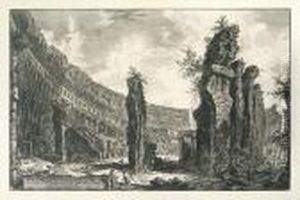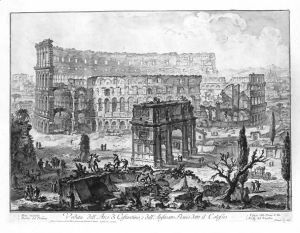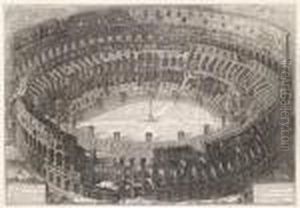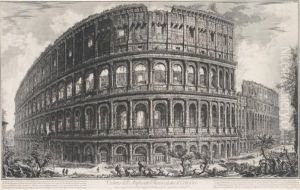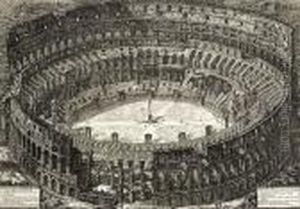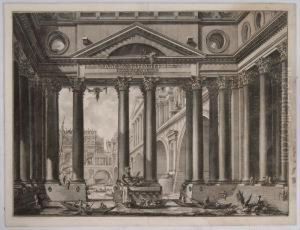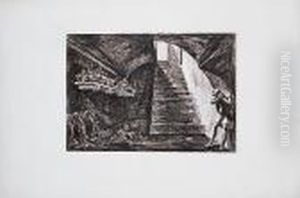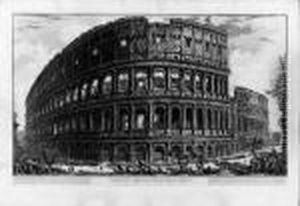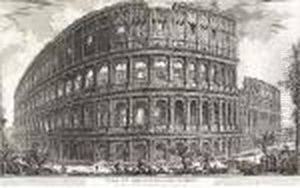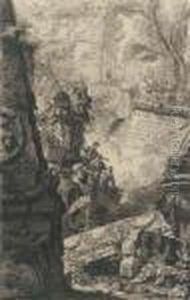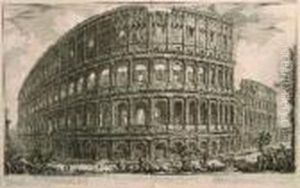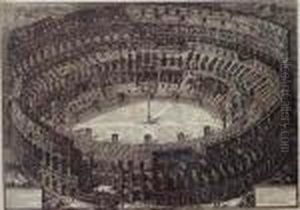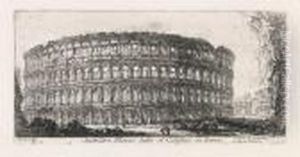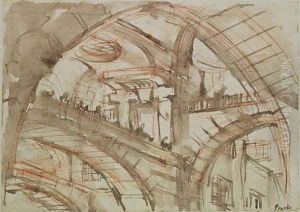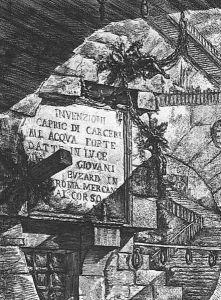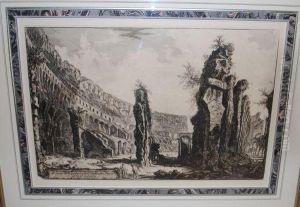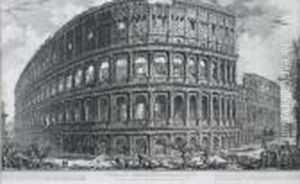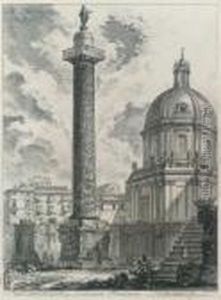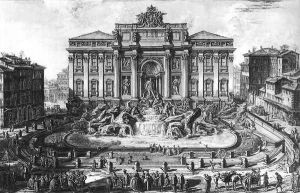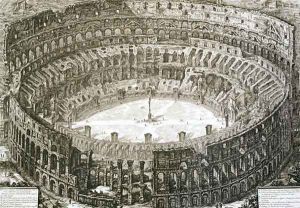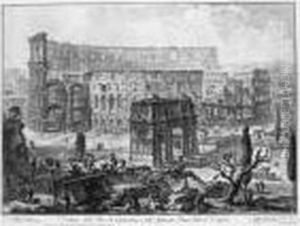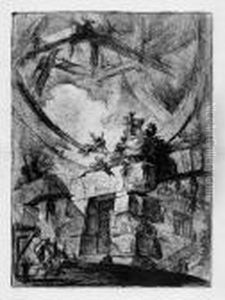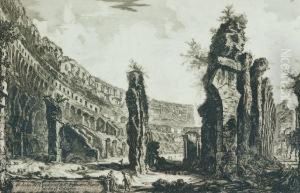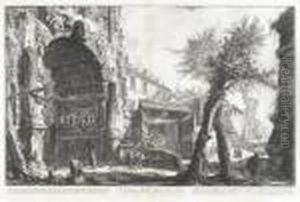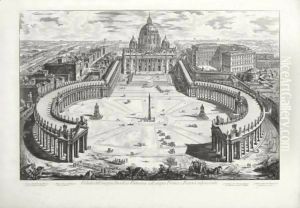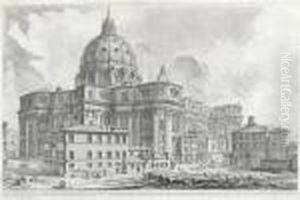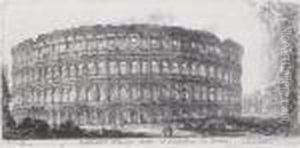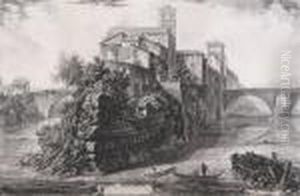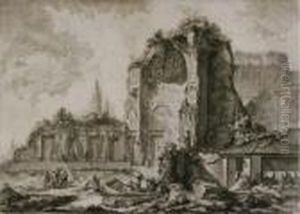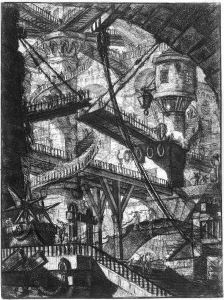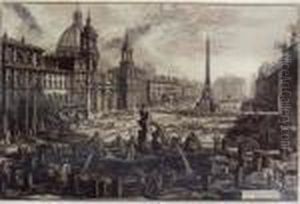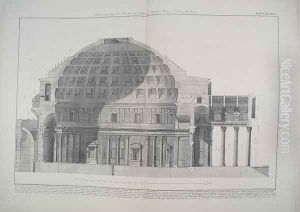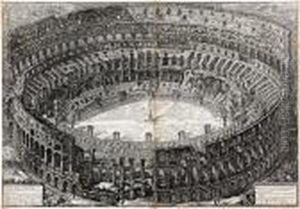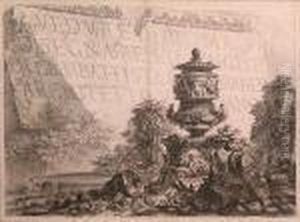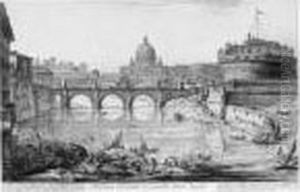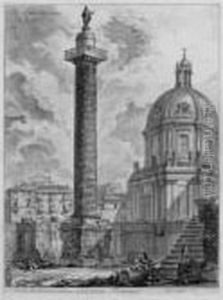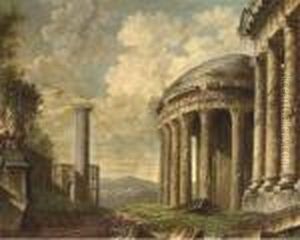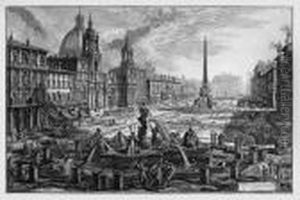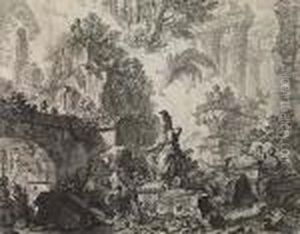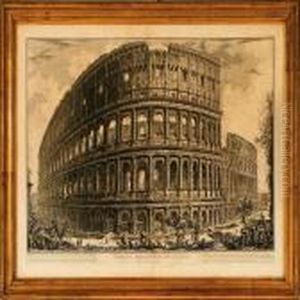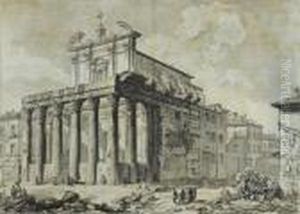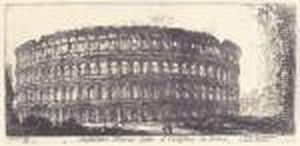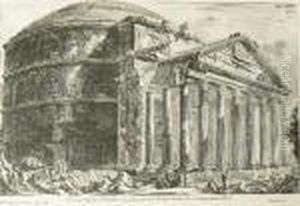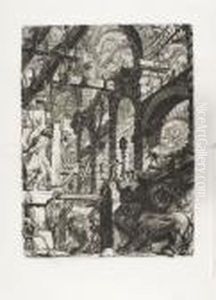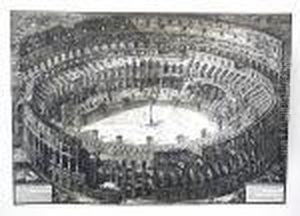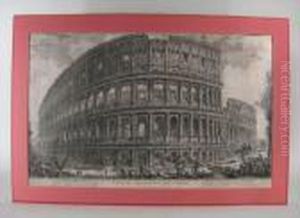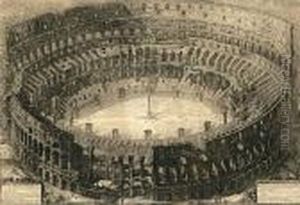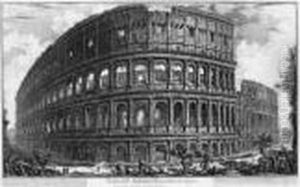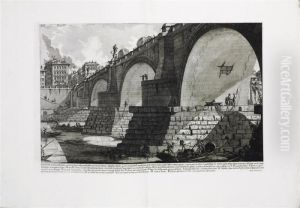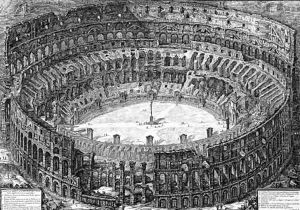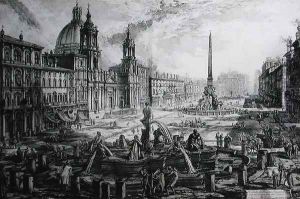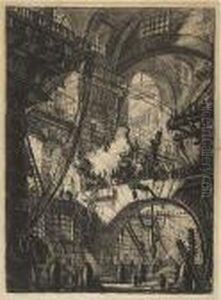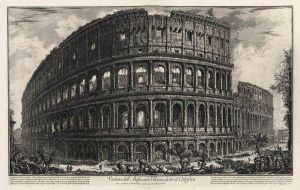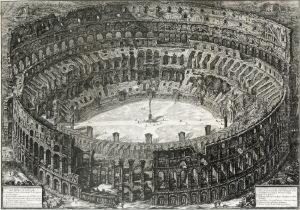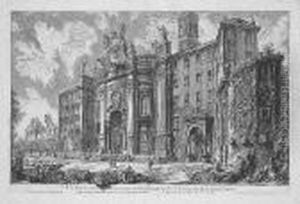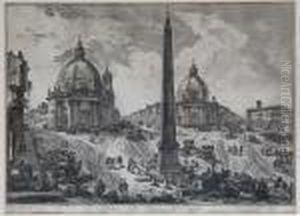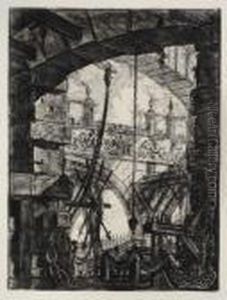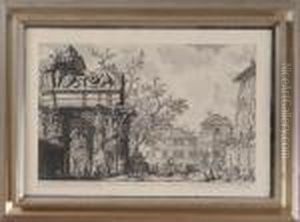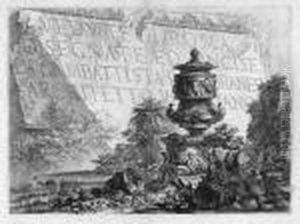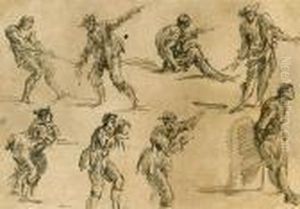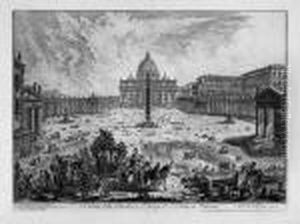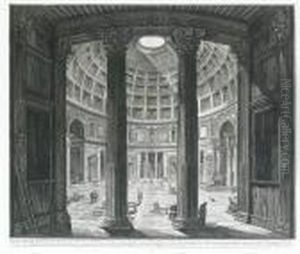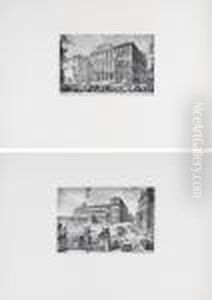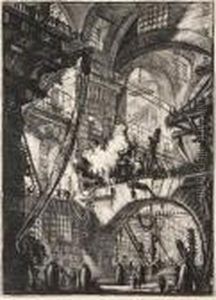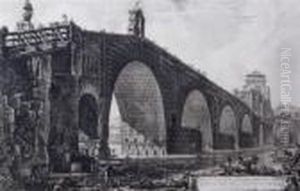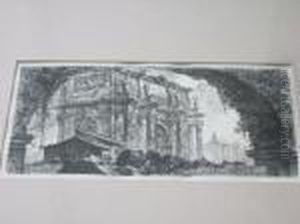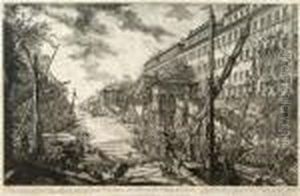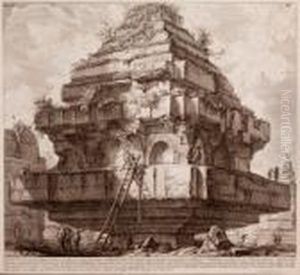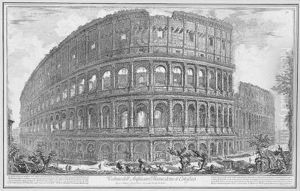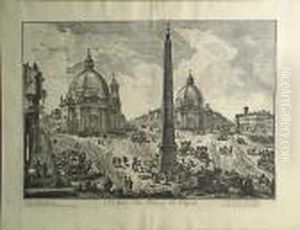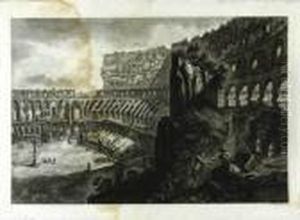Giovanni Battista Piranesi Paintings
Giovanni Battista Piranesi, known for his etchings of Rome and of fictitious and atmospheric 'prisons' (Carceri d'Invenzione), was an Italian artist famous for his vedute, or views, which were detailed prints of architectural subjects. Born on October 4, 1720, in Mogliano Veneto near Venice, Piranesi was initially trained as an architect under his uncle, Matteo Lucchesi, who was a prominent engineer and architect. He also studied stage design and perspective, which profoundly influenced his later work.
Piranesi moved to Rome in 1740, which became the central subject of his artistic work. His early exposure to the ruins of the ancient city had a lasting impact on him. He began producing etchings that depicted the grandeur and decay of Rome and its antiquities. These works were not mere representations but were imbued with dramatic intensity and an almost Romantic spirit.
In 1743, Piranesi released his first print series, 'Prima Parte di Architetture e Prospettive' (First Part of Architecture and Perspectives), followed by his famous 'Carceri' series in 1745, which shows imaginative, labyrinthine prisons that prefigure the Romantic fascination with the sublime and the terrifying. The 'Carceri' plates were reworked and republished by Piranesi in 1761 with even more fantastic detail.
Piranesi's most extensive work, 'Vedute di Roma' (Views of Rome), started in the 1740s and continued until his death in 1778. The series includes over 130 large-scale prints that portray Rome's ancient and contemporary architecture with meticulous attention to detail and artistic flair. His work was not just artistic; it also served an important documentary purpose, recording the appearance of many sites that have since changed or been destroyed.
Aside from etching, Piranesi was deeply engaged in archaeological and theoretical studies. He published several scholarly works, including 'Le Antichità Romane' (Roman Antiquities), where he argued passionately against the prevailing admiration for Greek architecture and in favor of Roman innovation and engineering.
Piranesi's influence extended beyond art and into the realms of architecture and design, affecting the European neoclassical movement. His prints were collected widely and influenced generations of architects and artists, including the Romantic poets and the French surrealists. He passed away on November 9, 1778, in Rome, leaving behind a legacy that continues to captivate and inspire.
